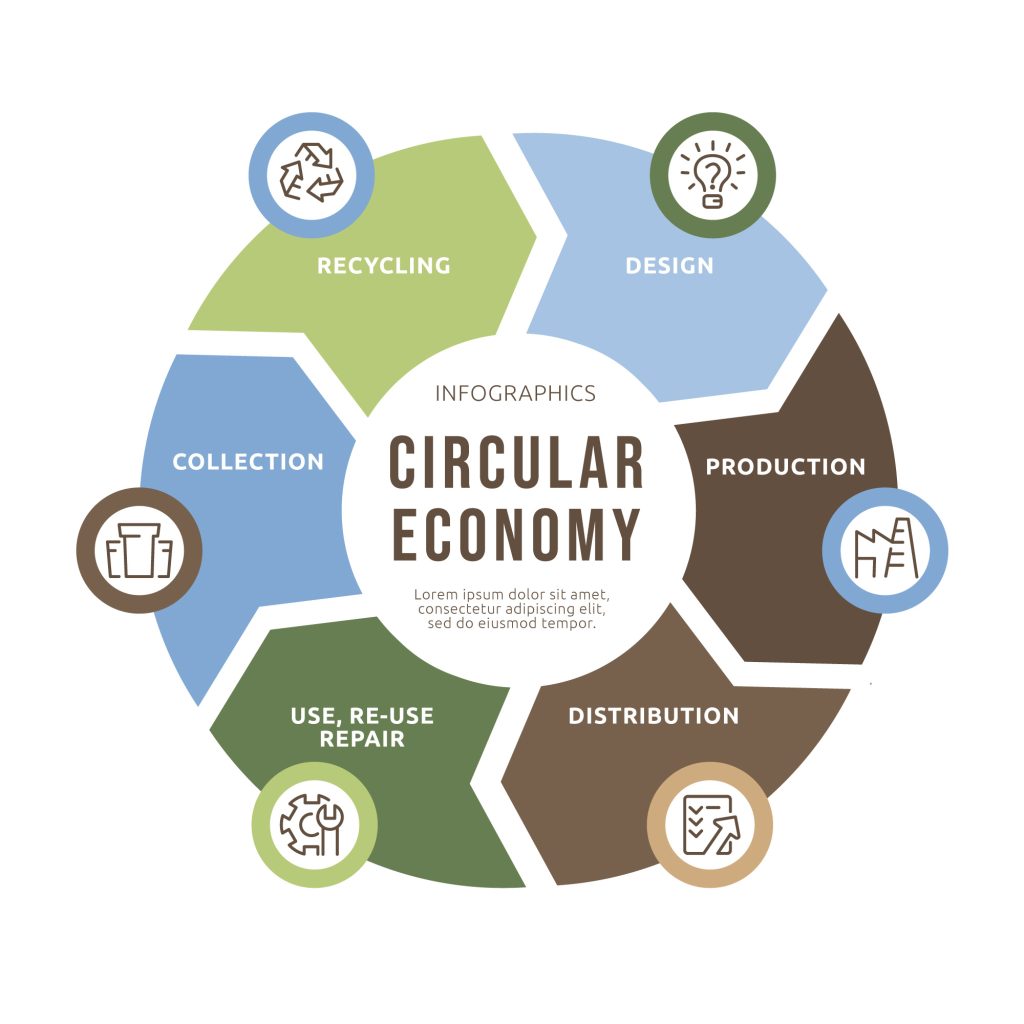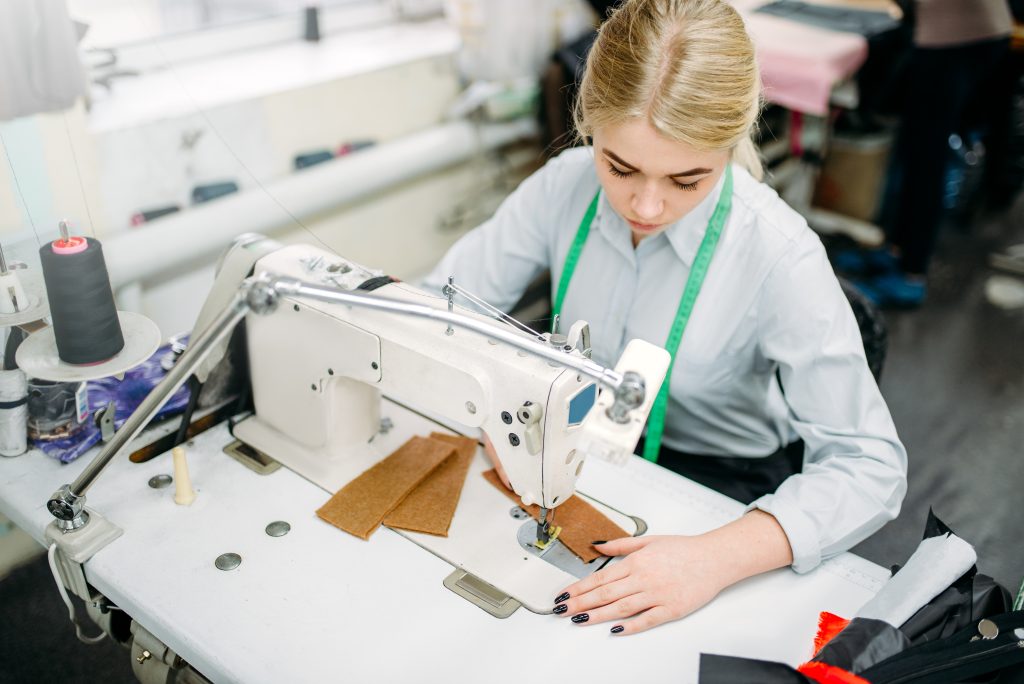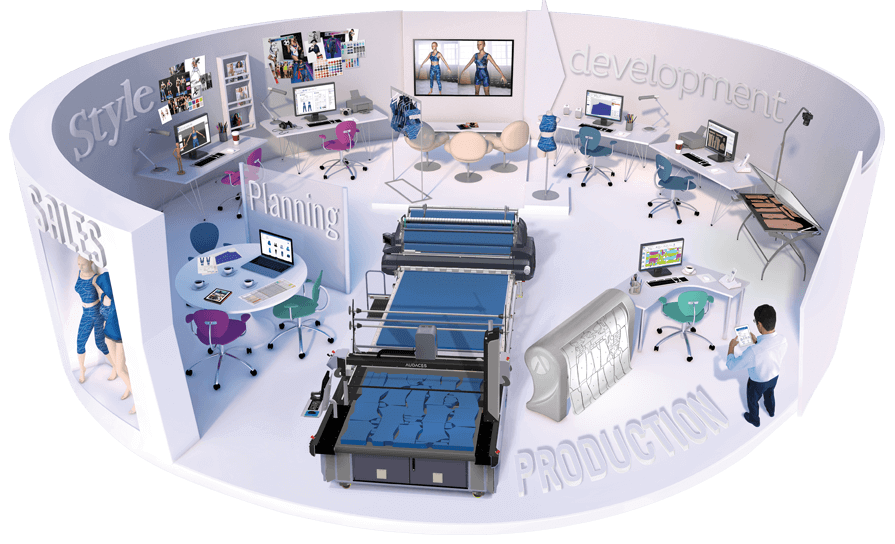Summary:
- Encouraging production models that promote sharing, loaning, reusing, reconditioning, and recycling of materials and products is of paramount importance in today’s context;
- Implementing circular fashion practices helps reduce textile waste, thereby addressing the environmental impact associated with the fashion industry;
- Leveraging technology as an ally in the transition to circular fashion can yield remarkable results. Experience the power of Audaces360 multi-solution for free!
The fashion industry is typically associated with a relentless pursuit of the new, with dazzling collections that change seasonally or, in the case of fast fashion, even weekly.
However, this production model often leads to risks such as unsold inventory, overproduction, and the rapid obsolescence of products, resulting in waste that is challenging to dispose of and causing significant harm to the planet.
Circular fashion emerged as a response to these challenges, promoting a different consumption model.
In this article, we will delve into the key characteristics of circular fashion and outline the initial steps to implement its principles in the supply chain.
Sumário
Happy reading!
What is circular fashion and how does it work?
Circular fashion represents the application of circular economy principles within the fashion sector.
In a circular economy, the focus is on a production and consumption model that encourages sharing, lending, reusing, repairing, refurbishing, and recycling existing materials and products for as long as possible.
The primary objective is to minimize waste generation while simultaneously creating added value.

In the realm of fashion, circular fashion entails selecting non-contaminating and recyclable fabrics while also rejuvenating existing fibers sourced from separate collections (including garments, fishing nets, carpets, industrial waste, plastic bottles, and more).
Its ultimate objective is to diminish the environmental impact of the textile industry, currently ranked as the second most polluting sector worldwide.
To put things into perspective, the fashion industry generates approximately 20 million tons of waste annually on a global scale, contributing to over 10% of greenhouse gas emissions.
As the term “circular” implies, circular fashion strives to create a closed-loop system where everything produced remains part of the cycle, eliminating waste.
This virtuous cycle stands in contrast to prevailing economic models, such as fast fashion, which promote a linear and unsustainable approach.
Learn more: How to master sustainable creation and production in the eco-fashion era
What are the benefits of circular fashion?
Deciding to embrace the principles of circular fashion brings multiple benefits across various aspects. Let’s explore some of them:
Textile waste reduction
The impact of textile waste is staggering. Over 300 million clothing items are discarded annually, with 80% of them composed of polyester, a material that takes up to 2,000 years to decompose.
Extending the lifespan of fibers through circulation significantly reduces textile waste, benefiting the environment.
Safe materials usage
Circular processes commence with the selection of chemicals and materials that are safe for both human health and the environment. Effective recycling relies on such resources.
Consequently, it is crucial to cleanse the fashion supply chain of hazardous substances. This practice ensures the environment and consumer well-being are safeguarded.
Transformation of waste into value
In the circular economy, materials are regenerated, enabling their prolonged use instead of depletion as seen in fast fashion.
This approach maximizes the value extracted from resources, continuously reintegrating them into the economic cycle rather than disposing of them as waste.
Learn more: How to properly dispose of your clothing company’s textile waste?
Environmental impact reduction
The environmental impact of the textile sector is substantial, and addressing this challenge is of utmost importance.
The industry consumes 1,500 billion liters of water annually, generates over 92 million tons of textile waste, contributes to 20% of industrial water pollution through processing and dyeing, and is responsible for 35% of microplastics in oceans stemming from synthetic garment washing.
By promoting and widely implementing circular economy principles through public policies, these figures can be significantly reduced, instilling hope for a sustainable future.
3 steps for incorporating circular fashion principles into your company
If you’re wondering where to begin on your journey toward circular fashion, we’ve gathered three essential steps to help you get started:

Foster transparency with suppliers
Implementing a virtuous circular fashion process extends beyond individual company choices.
To establish a production and consumption model that emphasizes sharing, lending, reusing, repairing, reconditioning, and recycling existing materials and products for as long as possible, it’s important to engage in a broader approach.
Building alliances and collaborative strategies with your suppliers is vital. Communicate your intentions and requirements, seeking partners who share your values and are committed to addressing the entire supply chain, beyond production and sales.
Working together with your suppliers, develop indicators, traceability systems, and comprehensive monitoring to enable a circular process.
Make intelligent and sustainable raw material choices
Selecting raw materials intelligently is a critical step towards achieving sustainability and circular fashion.
Firstly, ensure that the production chain does not contaminate raw materials with pollutants, reducing their impact during production, washing, and disposal. Secondly, prioritize recyclable fibers.
While natural fibers offer the advantage of biodegradability, it is important for a fiber to be 100% composed of the same material to be truly recyclable in a circular fashion.
Hence, a garment made from 100% polyester holds more value in a circular context than one with a composition of 80% cotton and 20% polyester.
Learn more: Find out what Fashion Revolution is and the purpose of the movement
Prioritize innovative garment design
Circular fashion requires specific design techniques that integrate circular economy principles from the outset of garment creation.
During the design and modeling phase, consider the durability of garments, waste generation, and the potential for recovery and recycling based on material choices, garment construction, and dyeing and finishing processes.
These operations are intricate and necessitate the development of new design techniques, materials knowledge, and a fresh mindset for fashion designers. It is crucial to disseminate knowledge of circular fashion principles, objectives, and related design techniques among designers and pattern makers.
Utilize resources like the Circular Design Kit, specially created guides that facilitate this transition.
Learn more: All you need to know about sustainable fashion jobs and Industry 5.0
Embracing upcycling in circular fashion
Upcycling, a fundamental concept of the circular economy, stands in contrast to traditional recycling, known as down-cycling. It involves repurposing existing objects to create new products, either by restoring a product or garment to its original function or transforming it into something of higher value.
Upcycling can be categorized into two forms:
- Pre-consumer upcycling: This approach utilizes unused fabric scraps to craft new garments, showcasing the resourcefulness of repurposing materials before they enter the consumer market;
- Post-consumer upcycling: Here, used clothes in varying conditions are modified and readapted into new forms, breathing new life into them and reducing waste.
Notable examples of successful upcycling ventures include “I was a Sari“, a social enterprise that transforms Indian saris into fashionable products, and “RiFò“, which creates accessories and garments from textile waste and scraps.
However, upcycling can also be practiced by individual consumers, allowing for creative expressions of sustainability at a personal level.
Join the circular fashion movement with Audaces solutions
Harnessing the power of technology can greatly assist in adopting circular fashion practices, seamlessly integrating and optimizing all stages of the supply chain.
At Audaces, our cutting-edge technologies are purposefully crafted to address the unique challenges faced by the fashion industry, while prioritizing environmental sustainability for the present and future generations.
Audaces360

Audaces360 is a cutting-edge technology designed to seamlessly integrate and optimize every step of the fashion value chain, resulting in cost reduction and accelerated processes.
Our platform offers a range of tools that effectively minimize waste and enhance efficiency throughout the entire garment lifecycle.
By utilizing Audaces360, you can experience numerous benefits:
Waste reduction in design
Develop models directly on the computer using Audaces Fashion Studio and simulate them with remarkable realism using Audaces 3D. This innovative approach significantly reduces fabric waste during the garment design phase.
Efficient fabric utilization
Audaces Marker, a component of Audaces360, enables automatic marker creation, saving up to 13% of fabric compared to manual methods. This advanced tool optimizes material usage, minimizing waste and maximizing cost savings.
Real-time process management
With Audaces Isa, you gain the ability to remotely manage the entire creation and production process in real time.
Seamlessly integrate technical sheets and automate pre-cost calculations using Audaces Idea, ensuring maximum efficiency while reducing errors and rework. Monitor and track the entire production chain effortlessly.
So, would you like to join us in making your processes more sustainable?
Download our free e-book and start making a difference today:
FAQ
Circular fashion is the practice of revitalizing existing fibers and garments to minimize environmental impact and waste in the supply chain.
Circular fashion offers numerous advantages, including the reduction of textile waste, the promotion of safe materials, the transformation of waste into value, and the decrease in the environmental impact of the fashion industry.
To embrace circular fashion, start by fostering transparency with your suppliers, making informed choices regarding intelligent and sustainable raw materials, and prioritizing innovation in garment modeling.










